IN FOCUS
Transboundary water cooperation to address droughts
10 November 2022
Prepared by Carlos Merida & Diego Jara
Human activities are increasingly affecting the climate worldwide (IPCC, 2021). A dry winter and spring followed by record-breaking summer temperatures hit across the Northern Hemisphere causing severe droughts particularly in Central Europe, China, and the US. (Hausfather, 2022). During the summer of 2002, rivers such as the Rhine, the Danube, the Elbe, the Yangtze, and the Colorado river dried up compromising navigation, and trade and hydropower activities.
Receding lakes and rivers have exposed vestiges from the past even the so called “hunger stones” from the 15th century. One of these rocks along the Elbe River reads “Wenn du mich siehst, dann weine” (If you see me, then weep) as a warning about famine and hardship caused by droughts (Henley, 2022).
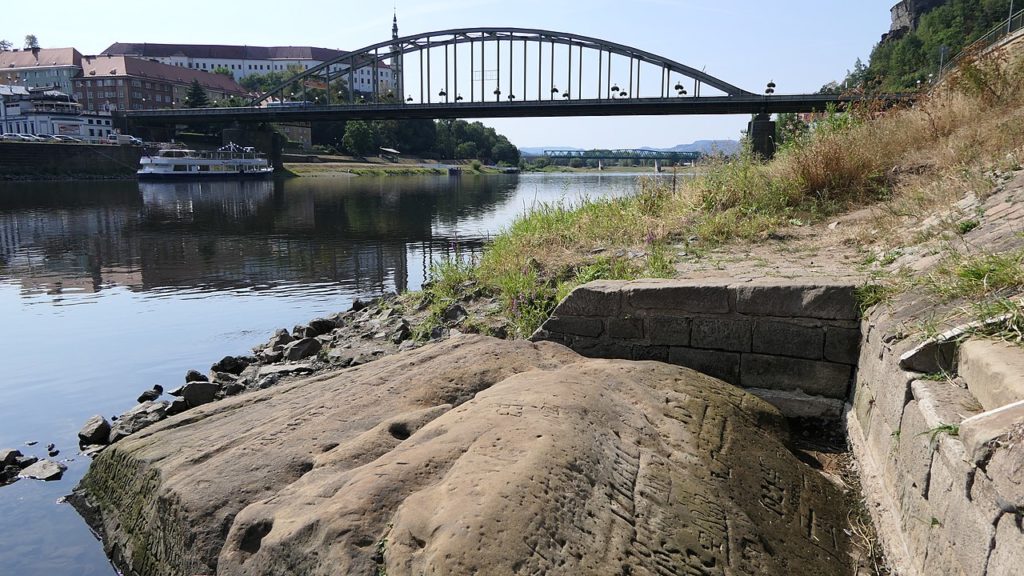
As a result of the recent droughts, in some parts of the Rhine, the water level decreased to 40 cm, forcing vessels to operate at a quarter of their capacity which shipping firms consider not profitable (Oltermann, 2022; Henley, 2022). Rivers in Central Europe not only facilitate trade and navigation but in France, their waters are also used to cool off nuclear plants which pose an increased risk to the environment when discharging hot water into already warm rivers such as the Garonne in the southwest of France (Louis, 2022).
In China, an unprecedented drought caused the Yangtze river to reach record-low water levels, with entire sections and dozens of tributaries drying up (Davidson, 2022). As a consequence, the hydropower capacity in Sichuan was reduced to the point of suspending and limiting the power supply to factories in the region (Crocker, 2022). In the United States, the Colorado river experienced one of the driest periods in centuries resulting in water reservoir levels to dropping to record-low levels, endangering hydropower and water supply for farmers and communities (De la Garza, 2022).
As drought becomes more evident in the Northern Hemisphere, states need to cooperate and find joint solutions to ensure water for their people and ecosystems.
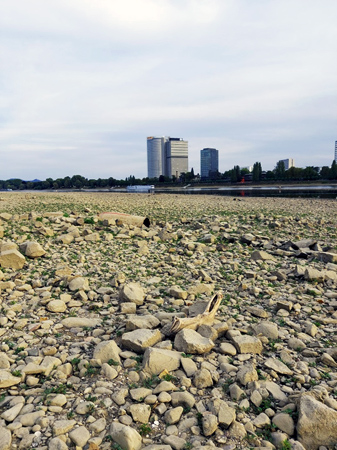
The Rhine river in Bonn
(Diego Jara, 2022)
The United Nations Convention to Combat Desertification has warned droughts have been more frequent and longer-lasting over the past two decades by roughly a third (UNCCD, 2022). Droughts have immense effects on societies, ecosystems, and economies (UNDRR, 2021). In the last 50 years, over 650,000 people have died and an estimated 55 million people are directly affected every year by droughts (UNCCD, 2022). As for nature, droughts affect agriculture, exacerbate species extinctions, increasing wildfires, and insect outbreaks, and result in the alteration in carbon, nutrient, and water cycling (Weiskopf et al., 2020). In general, droughts have the potential to lead affect regional economies, disrupt international trade, trigger waterborne diseases, and compromise food security (UNDRR, 2021). This can turn into domestic and international migration, social unrest, and conflicts.
As severe droughts have the potential to exacerbate competition and existing tensions between states sharing transboundary rivers and lakes, it is essential to foster dialogue and cooperative approaches based on the principles of equitable and reasonable utilization of freshwater recourses, no significant harm, cooperation, protection of ecosystems and peaceful settlement of disputes.
References and suggested readings
- Blade, T. (2022, August 10). Europe’s drought could be the worst in 500 years, warns researcher. Euronews. https://www.euronews.com/my-europe/2022/08/10/europes-drought-could-be-the-worst-in-500-years-warns-researcher
- Croker, N. R. R. (2022, August 20). The world’s rivers are drying up in drought and heat. Here’s how 6 look from space. CNN. https://edition.cnn.com/2022/08/20/world/rivers-lakes-drying-up-drought-climate-cmd-intl/index.html
- Davidson, H. (2022, August 23). China drought causes Yangtze to dry up, sparking shortage of hydropower. The Guardian. https://www.theguardian.com/world/2022/aug/22/china-drought-causes-yangtze-river-to-dry-up-sparking-shortage-of-hydropower
- De la Garza, A. (2022, August 25). The Colorado River Drought Is a Cautionary Climate Tale. Time. https://time.com/6208631/colorado-river-drought-climate-action/
- Ellerbeck, S. (2022, August 2). Drought is putting millions at risk in the Horn of Africa. World Economic Forum. https://www.weforum.org/agenda/2022/07/africa-drought-food-starvation/
- Garrick, D. E., Schlager, E., De Stefano, L., & Villamayor‐Tomas, S. (2018). Managing the cascading risks of droughts: Institutional adaptation in transboundary river basins. Earth’s Future, 6(6), 809-827.
- Hausfather, Z. (2022, July 26). State of the climate: 2022 on track for a summer of extreme heat. Carbon Brief. Retrieved September 6, 2022, from https://www.carbonbrief.org/state-of-the-climate-2022-on-track-for-a-summer-of-extreme-heat/#:%7E:text=The%20summer%20of%202022%20is,and%20parts%20of%20the%20US.
- Henley, J. (2022, August 19). Hunger stones, wrecks and bones: Europe’s drought brings past to surface. The Guardian. https://www.theguardian.com/world/2022/aug/19/hunger-stones-wrecks-and-bones-europe-drought-brings-past-to-surface
- Intergovernmental Panel on Climate Change. (2021). Climate Change 2021 The Physical Science Basis- Summary for Policymakers (Sixth Assessment Report).
- Kollewe, J. (2022, August 3). EDF cuts output at nuclear power plants as French rivers get too warm. The Guardian. https://www.theguardian.com/business/2022/aug/03/edf-to-reduce-nuclear-power-output-as-french-river-temperatures-rise
- Levy, B. S., & Sidel, V. W. (2011). Water rights and water fights: preventing and resolving conflicts before they boil over. American journal of public health, 101(5), 778–780. https://doi.org/10.2105/AJPH.2010.194670
- Limb, L. (2022, August 16). In pictures: Europe’s mighty rivers are drying up in the climate-driven drought. Euronews. https://www.euronews.com/green/2022/08/11/in-pictures-europes-mighty-rivers-are-drying-up-in-the-climate-driven-drought
- Louis, L. (2022, August 15). French nuclear plants break a sweat over heat wave. DW.COM. https://www.dw.com/en/french-nuclear-plants-break-a-sweat-over-heat-wave/a-62806646
- Oltermann, P. (2022, August 13). Rhine water levels fall to new low as Germany’s drought hits shipping. The Guardian. Retrieved September 6, 2022, from https://www.theguardian.com/world/2022/aug/12/germany-drought-rhine-water-levels-new-low
- UNCCD. (2022, May). Drought in numbers 2022- restoration for readiness and resilience (COP-15).
- UNDRR. (2021). GAR Special Report on Drought 2021. https://www.undrr.org/media/49386/download
- UNECE. (2021). Handbook on Water Allocation in a Transboundary Context. United Nations.
- Weiskopf, S. R., Rubenstein, M. A., Crozier, L. G., Gaichas, S., Griffis, R., Halofsky, J. E., … & Whyte, K. P. (2020). Climate change effects on biodiversity, ecosystems, ecosystem services, and natural resource management in the United States. Science of the Total Environment, 733, 137782.
- World Meteorological Organization (2022, August 26). Greater Horn of Africa faces 5th failed rainy season. Retrieved September 6, 2022, from https://public.wmo.int/en/media/news/greater-horn-of-africa-faces-5th-failed-rainy-season
Finalizó la primera edición del curso avanzado en gobernanza de aguas transfronterizas en América del Sur
5 Julio 2021
Cerca de 70 profesionales relacionados a la gestión del recurso hídrico participaron en el curso avanzado Gobernanza del agua en un contexto transfronterizo, organizado por la UICN y la UASB desde su Centro Andino de Estudios Internacionales, con el objetivo de fortalecer sus capacidades en aspectos relativos a la cooperación para la gestión sostenible de los recursos hídricos transfronterizos.
¿Qué desafíos afectan a las aguas transfronterizas en América del Sur?, ¿cómo se podría fortalecer la cooperación en esta materia en la región?, ¿quiénes intervienen en un proceso de diplomacia del agua?, son algunas de las interrogantes que se plantearon durante el curso avanzado Gobernanza de Aguas Transfronterizas en América del Sur, que finalizó este 02 de julio de 2021.
Desde el 24 de mayo, cerca de 70 profesionales entre ellos funcionarios de los ministerios de ambiente y de relaciones exteriores, relacionados a la gestión del recurso hídrico, han participado en los módulos impartidos por el cuerpo docente de la Universidad Andina Simón Bolívar – Sede Ecuador (UASB), el Centro de Derecho Ambiental y la Oficina Regional para América del Sur de la UICN, con el objetivo de fortalecer sus capacidades en aspectos relativos a la gobernanza y gestión efectiva del agua.
En los 6 módulos del curso se trataron las temáticas de: gestión y gobernanza del agua, equidad y sostenibilidad, diplomacia del agua, derecho internacional de aguas, gestión comunitaria y colectiva del agua, y seguridad hídrica y soluciones basadas en la naturaleza. En estos espacios, los participantes tuvieron la oportunidad de dialogar sobre la importancia de implementar marcos de gobernanza para solucionar potenciales conflictos en torno a la gestión del agua, a través de políticas públicas y acuerdos transnacionales que sean transparentes, coherentes y duraderos; fundamentados en una participación activa de actores interesados y principios del derecho internacional para la cooperación en la gestión integrada del agua.
“Como UICN, a través de los proyectos que implementamos a nivel mundial, hemos constatado que este es un proceso largo, pero es esencial implementar una diplomacia del agua con el involucramiento de actores en múltiples niveles para facilitar el diálogo y el consenso, con la finalidad de promover una gestión y gobernanza efectiva del recurso hídrico”, expuso Diego Jara, Oficial Legal del Centro de Derecho Ambiental de la UICN, durante el webinar “Retos para la diplomacia del agua en América del Sur”.
Las cuencas transfronterizas son complejas por su naturaleza, por lo tanto, lograr llegar a acuerdos y armonizar los intereses de los diferentes usuarios del recurso hídrico, requiere de mecanismos especiales de negociación. En ese contexto, dentro del curso avanzado se evidenció cómo la diplomacia del agua se plasma en acuerdos destinados a mejorar la gestión del recurso y las oportunidades de cooperación que existen entre los Estados para lograr ese objetivo, demostrando que la integración puede prevalecer sobre el conflicto.
En América del Sur existen 38 cuencas compartidas, de las cuales 23 se encuentran reguladas bajo algún marco legal o institucional de cooperación. Muchos de los acuerdos existentes deben ser revisados para su actualización y las instituciones que los implementan deben ser fortalecidas en relación con los procesos integrales de conservación, restauración y mitigación de los efectos del cambio climático y bienestar de la sociedad.
Entre algunos de los temas que los participantes tuvieron la oportunidad de analizar dentro del diplomado, se destacan:
- Oportunidades de cooperación: existen varios tipos de cooperación, los cuales pueden ir desde lo elemental como es el intercambio de información y datos, a la construcción de infraestructura, medidas técnicas de prevención, memorándums de entendimiento, firma de acuerdos, hasta llegar al establecimiento de instituciones.
- Diplomacia del agua: implica un proceso de involucramiento y participación de diferentes usuarios y sectores a múltiples niveles, incluyendo la sociedad civil y las autoridades locales para llegar a acuerdos sobre la gestión del agua. Sus condicionantes habilitantes son la voluntad política, la capacidad técnica y financiera, y los mecanismos de participación.
- Gobernanza del agua: se debe establecer un proceso político de toma de decisiones, mediante un marco institucional y de regulación en 4 dimensiones: social, económico, facultades políticas y sustentabilidad que permita el manejo coordinado y eficiente del recurso hídrico.
- Gestión integrada de recursos hídricos (GIRH): proceso que promueve la gestión y desarrollo coordinado del agua, la tierra y los recursos relacionados, con el fin de maximizar el bienestar social y económico resultante de manera equitativa, sin comprometer la sostenibilidad de los ecosistemas vitales.
La realización de este curso fue posible gracias a la firma de un memorando de entendimiento entre la UICN y la UASB, firmado en mayo anterior, con el objetivo de colaborar en cursos de formación profesional o fortalecimiento de capacidades; así como otros eventos que promuevan la integración regional, dentro del ámbito de sus competencias.
De parte de la UICN, agradecemos a todos los participantes y cuerpo docente que hizo posible la primera edición del curso avanzado de Gobernanza de Aguas Transfronterizas en América del Sur. Creemos importante facilitar espacios de debate y reflexión alrededor de esta temática y esperamos que como resultado de esta jornada se promueva el trabajo colaborativo para crear acuerdos y lineamientos adaptados a la realidad regional, que permitan reducir brechas y solventar desafíos presentes y futuros.
Cifras relevantes:
A nivel global
- Existen alrededor de 310 cuencas compartidas entre 151 países, las cuales representan el 47.1% de la superficie terrestre.
- Un 60% de estas cuencas carece de marcos de cooperación que puedan resolver posibles tensiones y conflictos.
América del Sur
- Posee 38 cuencas compartidas que cubren el 60% de su superficie y albergan al menos un 30% de la población.
- Estas cuencas representan el 75% del agua superficial total de la región.
Más información: Diego.Jara@iucn.org
An insight into the cultural and spiritual value of water
21 April 2021
Prepared by Léah Khayat & Diego Jara, IUCN Environmental Law Centre
Value can be seen from three different perspectives. As an exchange value, meaning the price of a good in the market; as a utility, in other words the use value of a good or service; and finally, importance which relates to the appreciation or emotional value attached to a given good or service.[1] This last perspective is important to this article, since various religious, indigenous and local groups have given an emotional value to nature itself. The different elements and values that make up the cultural and spiritual significance of nature differ depending on the culture and in that sense, they are entirely context dependent and can change over time.[2]
In 2017, the High Level Panel on Water recognised in its Bellagio Principles on Valuing Water that water has multiple values. In fact, its first and foremost principle is to consider the multiple values to different stakeholders in all decisions affecting water and affirming that “there are deep interconnections between human needs, economic well-being, spirituality and the viability of freshwater ecosystems that must be considered by all”. Depending on one’s beliefs, water can heal, cleanse, purify or bring blessings and the failure to incorporate the full representation of the values of water results in weaker water governance today. This is linked to the necessity to look at water from beyond an economic perspective and to encompass within the scope of water governance the spiritual and sacred values that many indigenous communities, whether in Africa, South America or Oceania, attribute to water. In this piece, we will primarily focus on the spiritual and religious values associated with water, specifically when it is seen as holy, sacred, magical or mythical.[3]
Water, as our most precious resource, has been intimately linked to humankind and cultural development and it has become a source of rich symbolism.[4] It held a spiritual – even divine – significance for many ancient civilisations. The ancient Egyptians had, amongst others, Sobek, god of the Nile river depicted as a crocodile, while in Aztec mythology, the goddess Chalchiuhtlicue represented the entire range of the natural manifestations of water and as such she was involved in every part of life, from birth to death[5]. For the Maya, cenotes were the gateway to another world, where supernatural beings live and where the souls of the dead go[6]. This divine connection with water manifested itself also through the development of installations aimed at conserving and managing water for ceremonial, economic and social purposes, such as the crop terraces and irrigation systems in the Inca Sacred Valley or the Nazca aqueducts in Peru[7].
This spiritual relationship between human beings and water is still present in many indigenous communities today. In the Wayuu community in La Guajira, Colombia, Juya (rain) is seen as the giver of life, the father who allows the rebirth of the dead and in that sense, it represents the source of life and blood of Mother Earth. The vision of water as sacred is even stronger in areas like La Guajira where water scarcity can occur months at a time. For the Wayuu, water is a living being at the heart of traditional rituals and ceremonies.[8] The symbolism of water as a lifeline is also prevalent in the traditional Aboriginal Australian culture of the Ngarrindjeri who see River Murray as “an immense artery of a living body consisting of the Lakes and the bush and over the southern plains and undulating plain”.[9] Worshipping bodies of water as divinities is a custom that still exists today in many religions. For Hindus, the river Ganges, that flows for more than 2,500 km across northern India, is considered sacred. In Hinduism, the river is embodied by the goddess Ganga, Mother of all human beings, and is considered as the holiest of rivers. Hindus from around the world traditionally gather at the banks of the river for holy festivals and immerse themselves in the water for purification from sins.
Nowadays, this spiritual and sacred value of water tends to clash with the perception of water as a resource at the disposal of society that can be used for economic development. This has led to the interests of local and indigenous communities being overlooked in order to pursue activities such as mining and oil extraction, as well as large dam development for hydropower. Indigenous communities are gradually losing territories and natural resources along with the spiritual and emotional connection to nature and the environment that surrounds them. This shows how essential it is to include and enable full participation, consultation and active engagement from indigenous communities in decision-making processes, particularly for activities that might affect them and their livelihoods. Moreover, understanding the multiple values attributed to water can also help avoid situations where a community’s traditional way of life is disrupted to further another’s economic interests.
Recent efforts to protect the environment, while at the same time respecting and including the perspective of indigenous communities, have led to the development of approaches that embody the traditional Andean philosophy “Sumak Kawsay” or “good living”, which promotes a community-centric and ecologically-balanced way of life. For example, the ‘rights of nature’ are increasingly being recognised in national legislations and jurisprudence. In 2008, Ecuador became the first country in the world to recognise the Rights of Nature in Article 71 of the Constitution: “Nature or Pacha Mama, where life is reproduced and exists, has the right to exist, persist, maintain and regenerate its vital cycles, structures, functions and its process in evolution” and in that sense, the people have the legal authority to enforce these rights on behalf of ecosystems with the ecosystem itself named as the defendant. The first lawsuit based on the constitutional provision of the Rights of Nature featured the Vilcabamba River as the plaintiff defending its own rights to exist and maintain itself when trying to stop a government highway construction project interfering with the natural flow of the river. In a landmark decision, the court ruled to stop the project. Another significant example of this is the Whanganui River in New Zealand, the ancestral river of the Maori tribes of Whanganui. For 700 years, the tribes controlled, protected and depended on their “river of sacred power” until the arrival of European settlers in the 1800s. In 2017, to further strengthen environmental protection of the river, which is believed to be an ancestor in the Maori traditions, New Zealand passed legislation declaring Te Awa Tupua, meaning the river and all its physical and metaphysical elements, to be a person in the eyes of the law.
“Valuing water” was the theme of World Water Day 2021, a day celebrated every year on 22 March to focus the world’s attention on the importance of water and raise awareness of global water governance issues. This year’s theme recognises the importance of integrating the cultural significance of water and the sacred value it holds for human beings in water management and governance. This also involves ensuring the preservation and promotion of traditional indigenous knowledge to preserve these natural resources. These legal milestones testify to the recent efforts undertaken in several countries, not only to give greater protection to the environment, but also to recognise the deep bond and connection that exist between indigenous communities and water. Water is the foundation of life and approaches to valuing it vary depending on users, background and perspectives. As such, it has proven difficult to reflect the all-encompassing significance of water in policies and financial investments around the world[10]. As a result, this leads today to inequalities in access to water resources as well as unsustainable use of water supplies and infringement of basic human rights.[11] Overall, inclusive stakeholder engagement and empowerment at all levels of decision-making processes are already a first step in ensuring full consideration of the multiple values of water.[12]
Further information:
Blog: Why are we valuing water?
Visual Story: The Value of Water ‘Precious Public Good or Profitable Private Asset?’
[1] United Nations, The United Nations World Water Development Report 2021: Valuing Water. UNESCO, Paris.
[2] Verschuuren B., Mallarach J-M., Bernbaum, E., Spoon J., Brown S., Borde R., Brown J., Calamia M., Mitchell N., Infield M and Lee E. (2021). Cultural and spiritual significance of nature. Guidance for protected and conserved area governance and management. Best Practice Protected Area Guidelines Series No. 32, Gland, Switzerland: IUCN. XVI + 88pp.
[3] Cultural and spiritual significance of nature, IUCN (2021).
[4] United Nations, Conserving Cultural and Biological Diversity: The Role of Sacred Natural Sites and Cultural Landscapes, 2006, UNESCO. Paris.
[5] Dehouve D, The Rules Of Construction Of An Aztec Deity: Chalchiuhtlicue, The Goddess Of Water (2020) 31 Ancient Mesoamerica 7.
[6] CSVPA (2018h). CSVPA Best Practices Case Study: Aspirations for creating systems of conserved areas to protect ground water through the cultural importance of Sacred Maya Cenotes in Yucatan, Mexico
[7] Marta Brunilda Rovere y Alejandro Iza (Editors) (2007). Prácticas ancestrales y derecho de aguas: de la tensión a la coexistencia. IUCN, Gland, Switzerland.
[8] Daza-Daza, Alcides R., Rodríguez-Valencia, Nelson, & Carabalí-Angola, Alexis. (2018). El Recurso Agua en las Comunidades Indígenas Wayuu de La Guajira Colombiana. Parte 1: Una Mirada desde los Saberes y Prácticas Ancestrales. Información tecnológica, 29(6), 13-24. https://dx.doi.org/10.4067/S0718-07642018000600013
[9] Birckhead J., Greiner R., Hemming S., Rigney D., Rigney M., Trevorrow G. and Trevorrow T. 2011. Economic and Cultural Values of Water to the Ngarrindjeri People of the Lower Lakes, Coorong and Murray Mouth. River Consulting: Townsville.
[10] UNESCO (2021).
[11] Ibid.
[12] Ibid.
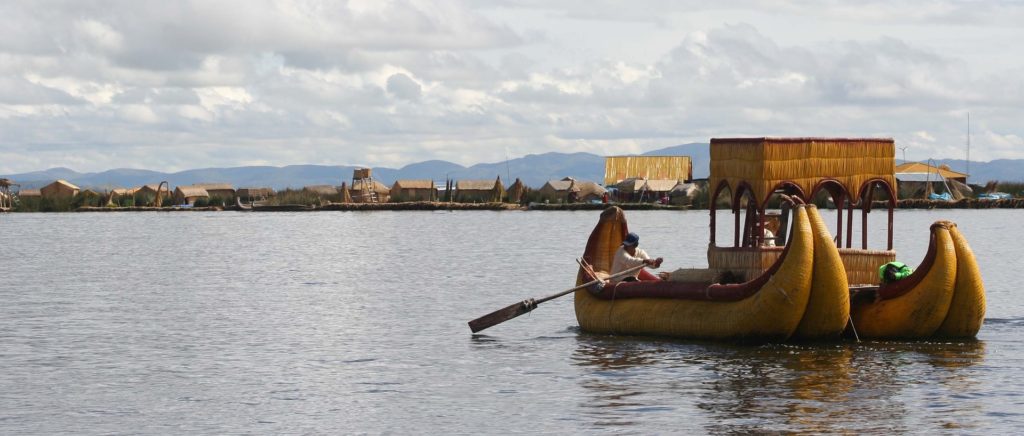
Melting summits: the need to adopt a “science-governance and diplomacy” approach to climate change
20 April 2021
Prepared by Carolyne Clermont & Diego Jara, IUCN Environmental Law Centre
On February 7, 2021, more than 200 people lost their lives to a flash flood in the foothills of the Indian Himalayas. History is repeating itself here as in June 2013, more than 3,000 people went missing, and 800 died, in similar circumstances, and in the same area. In both cases, the location of these floods – in the paraglacial zone –, the meteorological conditions, and the impacts of climate change in fragile ecosystems were natural precursors to these tragic events. But rapid, unregulated development and over-exploitation of rivers in the high Himalayas were also at play here. Indeed, neglecting all warnings of the experts, including courts’ rulings, rampant construction of hydropower projects was carried out in sensitive zones. It is therefore not a surprise that most human casualties in late February were workers at two hydropower projects that were severely affected by the flooding.
This case highlights the importance of reliable data and information regarding the state of glaciers, large water infrastructure and their potential risks to humans and nature, especially in remote areas facing the most extreme consequences of global warming. Such crucial information can allow for the adoption of timely policies, laws, agreements and monitoring mechanisms to mitigate similar events in mountainous ranges such as the Himalayas, the Andes and the Alps.
IUCN, within the framework of BRIDGE (Building River Dialogue and Governance), plays an active role in facilitating dialogues to link a science-policy and diplomacy approach to support countries in effective policy implementation and enforcement of norms for effective water governance. For that purpose, the IUCN Environmental Law Centre will publish a paper on Climate Diplomacy during World Water Week 2021, which will be available in the Water, Governance, Law and Diplomacy Platform to explore this approach in detail and plant the seed for discussion about our melting glaciers.
For more information please refer to the IUCN led 2020 World Water Week Event on “Facing the climate emergency: effectively leveraging science, governance and diplomacy”.
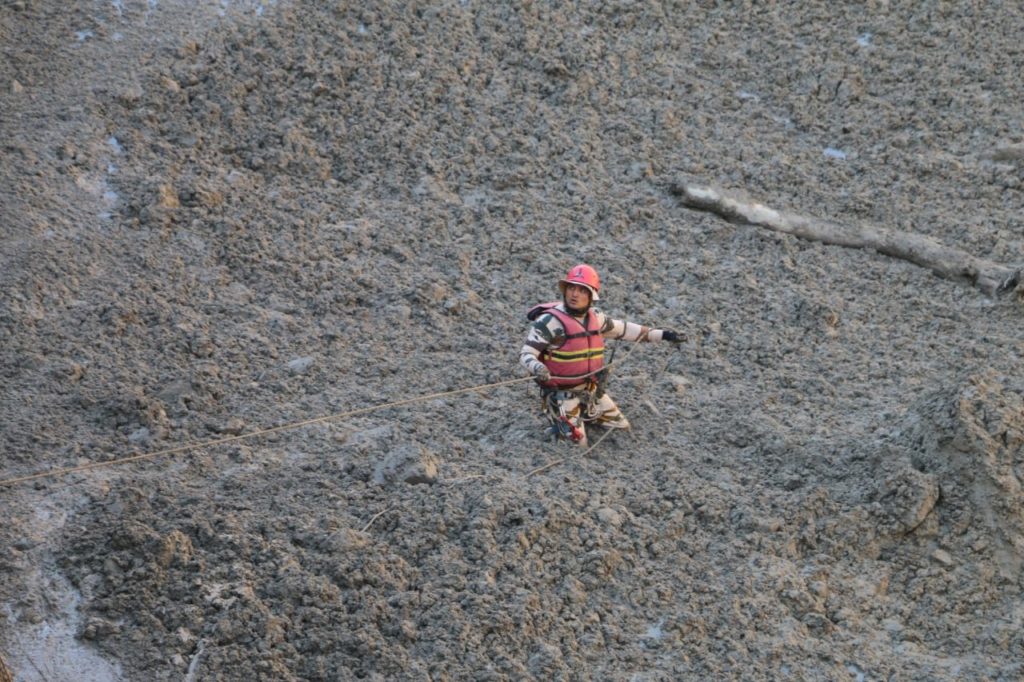
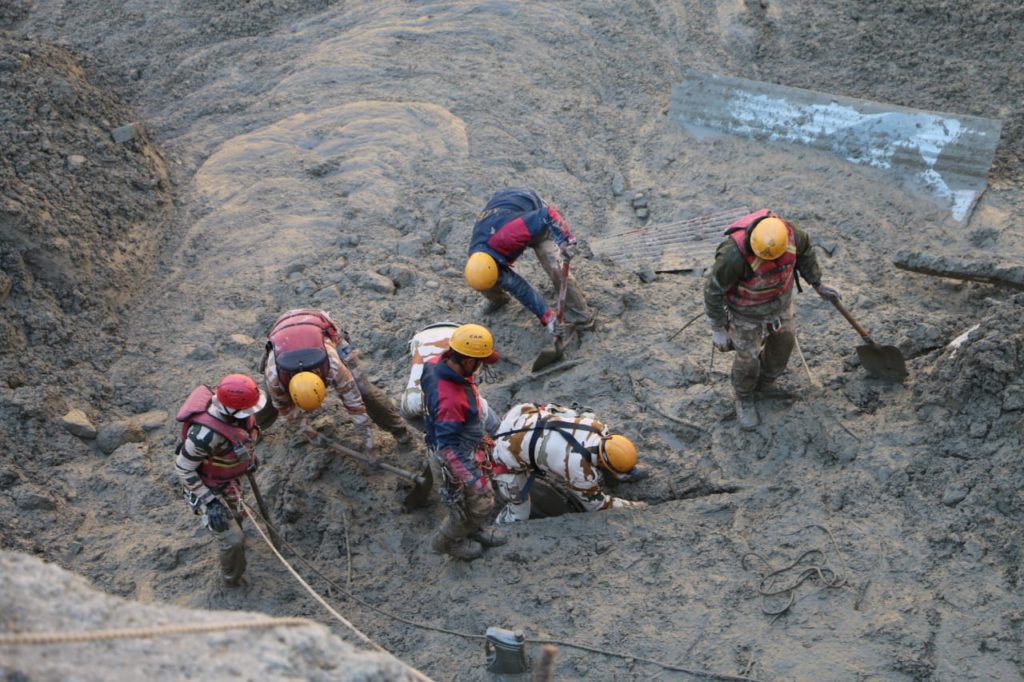
The role of women in water governance
8 March 2021
Prepared by Léah Khayat, IUCN Environmental Law Centre
In January 1992, five hundred governmental and non-governmental water experts gathered in Dublin, Ireland at the International Conference on Water and Environment to discuss the future of global water governance in a changing climate. The guiding principles that emerged from this Conference recognised the essential role of women in water management. Principle 3 of the Dublin Statement establishes that “women play a central part in the provision, management and safeguarding of water”, and therefore, positive policies need to be adopted not only to address the specific needs of women with regard to water but also to empower them to participate “at all levels in water resources programmes, including decision-making and implementation”. This statement from the international community acknowledged that although women were and are still today the primary provider of water resources in households around the world, they are rarely involved in making decisions about the management of these water resources.[1]
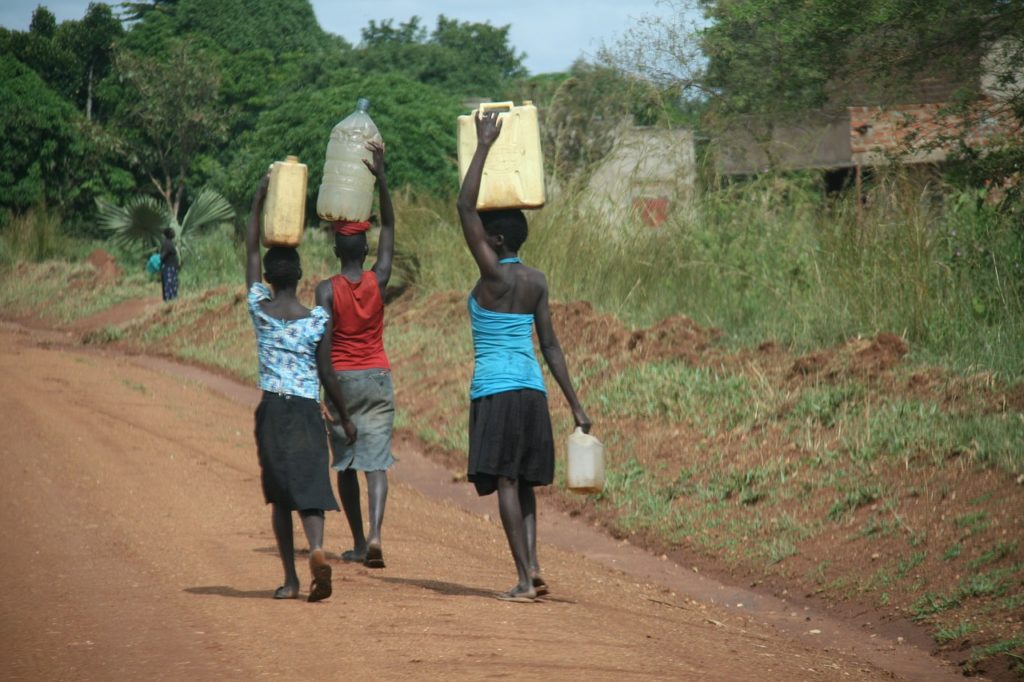
Three decades later, the world is still far from achieving gender equality in water and sanitation. The challenges that women were facing then with regard to water use, collection and management are now exacerbated by the consequences of climate change. Around the world, women and girls are more often responsible for collection and management of water in the household. According to a UN Women study based on data from 61 countries, in 80% of water-deprived households, women and girls carry the burden of water collection.[2] As water scarcity, heatwaves and droughts become more widespread, women and girls find themselves walking greater distances to fetch water. In many cases, this can affect girls’ chances of being enrolled in school as studies have shown that a one-hour time reduction in water collection can increase the rate of girls’ school enrolment.[3]
In addition to this, safe and affordable access to sanitation and hygiene for women is still hard to come by. Water, sanitation and hygiene (WASH) are essential to the fulfilment of women’s rights as well as their economic and social development. Ensuring safe and widespread access to WASH for women and girls contributes to gender equality and their inclusion in society.[4] This is also critical when talking about menstrual hygiene management, which still carries significant stigma and is considered taboo in many areas around the world. Consequently, until recently, menstrual hygiene was completely overlooked in sanitation policies and programming, further excluding women and girls from public life.[5] In many cases, it means that, during this time, girls have to miss school and women are sometimes forced to stay home, missing out on a day’s income.
Women represent a significant part of the stakeholders involved in everyday water use and management, but, as of 2014, made up less than 17 % of the WASH labour force in developing countries.[6] Their underrepresentation in technical jobs and leadership roles in the WASH sector, that can be due to cultural barriers but also the fact that they are less likely to own the land where water springs from[7], can in fact hinder the efficiency of water management. In fact, a growing amount of evidence shows that involving both women and men can “increase project effectiveness” and “improves the likelihood of sustainability”, according to a UNDP study of 44 water schemes in Asia and Africa[8]. At the national level, women can lead towards more inclusive water and sanitation strategies that integrate women’s concerns. Overall, to fully understand the gender roles in water use and management and the challenges that women and girls may face with regard to access to water and safe sanitation, it is essential to collect more and better data that is disaggregated by sex and takes into account the intersectionality with other factors (such as class, ethnicity or wealth) that may affect access to WASH.
The IUCN Environmental Law Centre aims to explore these issues relating to gender, water governance and sanitation in a new paper set to be published during World Water Week 2021. This report will focus on the gender inequalities in WASH, the importance of adopting gender-inclusive policies and empowering women through equal participation and leadership in water management bodies, and finally the recognition of women’s unique knowledge with regard to water resources.
[1] http://www.wmo.int/pages/prog/hwrp/documents/english/icwedece.html
[2] UN Women. Gender Equality in the 2030 Agenda: Gender Responsive Water and Sanitation Systems Issue Brief. 2018.
[3] The World Bank, Access to Water, Women’s Work and Child Outcomes, G. Koolwal, D. van de Walle, 2010.
[4] GenderCC.Topic Review: Gender and Water. 2019.
[5] UN Women. Gender Equality in the 2030 Agenda: Gender Responsive Water and Sanitation Systems Issue Brief. 2018.
[6] https://www.wri.org/blog/2018/10/women-are-secret-weapon-better-water-management
[7] Fauconnier, I., Jenniskens, A., Perry, P., Fanaian, S., Sen, S., Sinha, V., Witmer, L. (2018). Women as change-makers in the governance of shared waters. Gland, Switzerland: IUCN, viii + 50pp.
[8] UNDP & GWA, Resource Guide: Mainstreaming Gender in Water Management, 2006.
